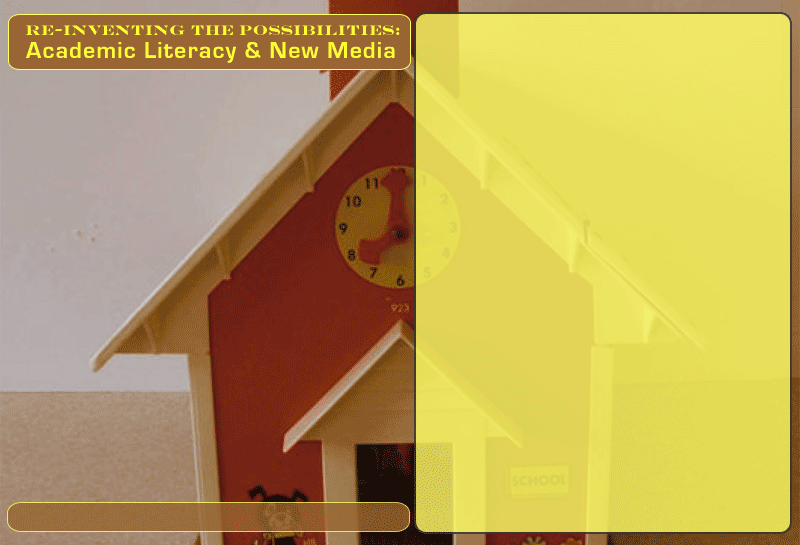
With a few small wording changes to the Writing Program Administrators (WPA) statement (e.g. composing for writing), the engagement of critical literacies in relation to writing-specific outcomes can easily be applied to engagement with new media texts. It isn't much of a shift for writing-based outcomes to transform into new-media outcomes if our notion of composing more generously draws on topoi and commonplaces from within and outside of writing studies. For instance, under the Rhetorical Knowledge heading, three of the goals from the WPA statement are listed on the left of Table B, while the revisions of those goals for new media literacies are on the right:
Table B. Updating written-specific literacies to new media literacies (italics show changes)
Writing Outcomes |
New Media Outcomes |
|
|
In the written outcomes, these goals don't necessarily suggest that students should interact only with written texts and topoi. We argue that, with slight changes to the new media outcomes, those commonplaces of writing classrooms can be expanded to include new media composition practices, which will give students a larger and more complex understanding of and interaction with their worlds.
In another brief comparison, the Critical Literacies section (i.e. 'Critical Reading, Thinking, Writing') of the WPA statement can be shifted to include new media textualities (see Table C):
Table C. 'By the end of first-year composition, students should' be able to demonstrate the following Critical Literacy outcomes:
Writing Outcomes |
New Media Outcomes |
|
|
Strikingly, there is relatively less verbage that needs to be updated in the Critical Literacy section of the letteracy-emphasized statement than in the Rhetorical Knowledge section in order for new media literacies to be accommodated. In the next section, we offer an HTML version of the new media outcomes. In addition, we have provided a comparison between the WPA statement and a new media literacies statement (in a PDF) for general-education classes, showing revisions for all four of the original statement's sections.
------------------------------
Kress makes the suggestion that new media texts contain a mixture of genres that can still be named [and thus analyzed] according to their dominant genre (2003: 119). We argue that this is too quick an assessment of the intricacies of new media texts. There were, for instance, texts that he was unable to explore in the medium of his book, Literacy in the New Media Age. Thus, we change genre in the WPA statement to modes and media, which is a more useful instantiation of Kress's and van Leeuwen's description of the materialities of new media textual production (2001: 79-81). We believe that the terms modes and media better signal the possibilities of a new media text being composed without it having a dominant genre—at least one recognizable to readers, such as in the case of Miles' Violence of Text (2003) collection. (See Ball, 2004: 411-412, for a discussion of readers' misunderstanding of Miles' argument because readers were searching for a familiar or dominant genre, neither of which the text contained.) (go back to table above)
Go back to the last node.